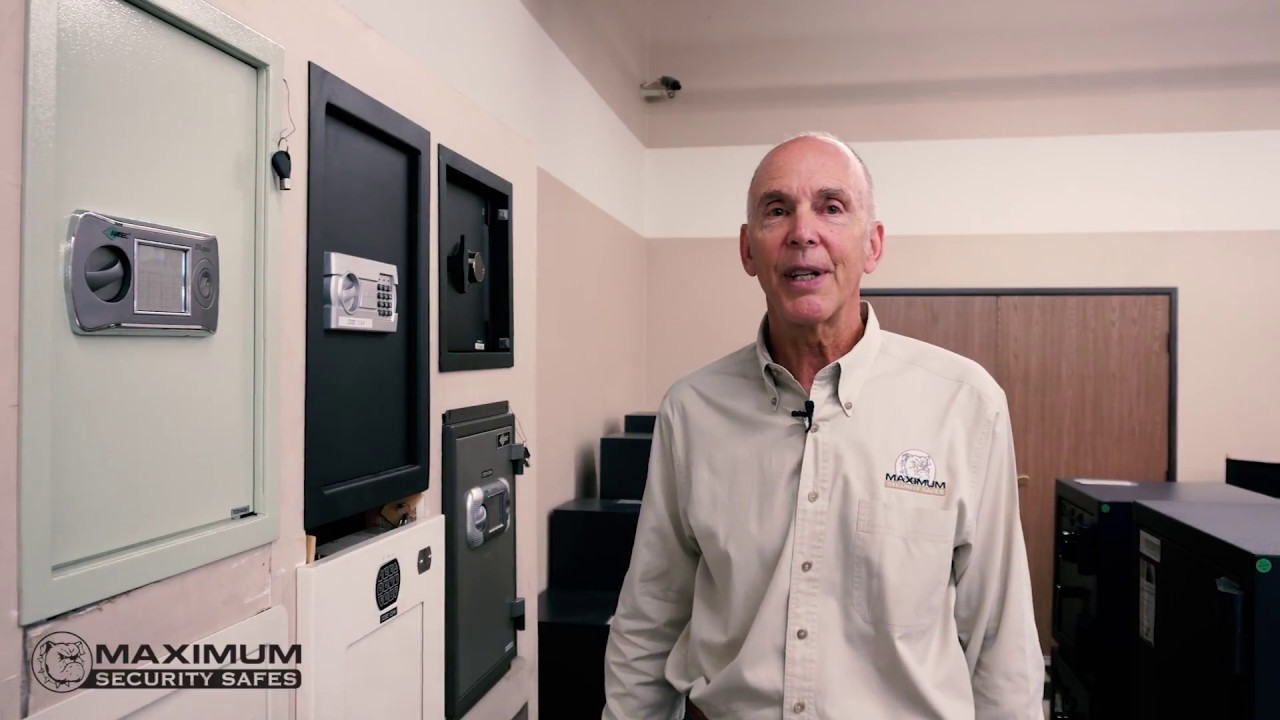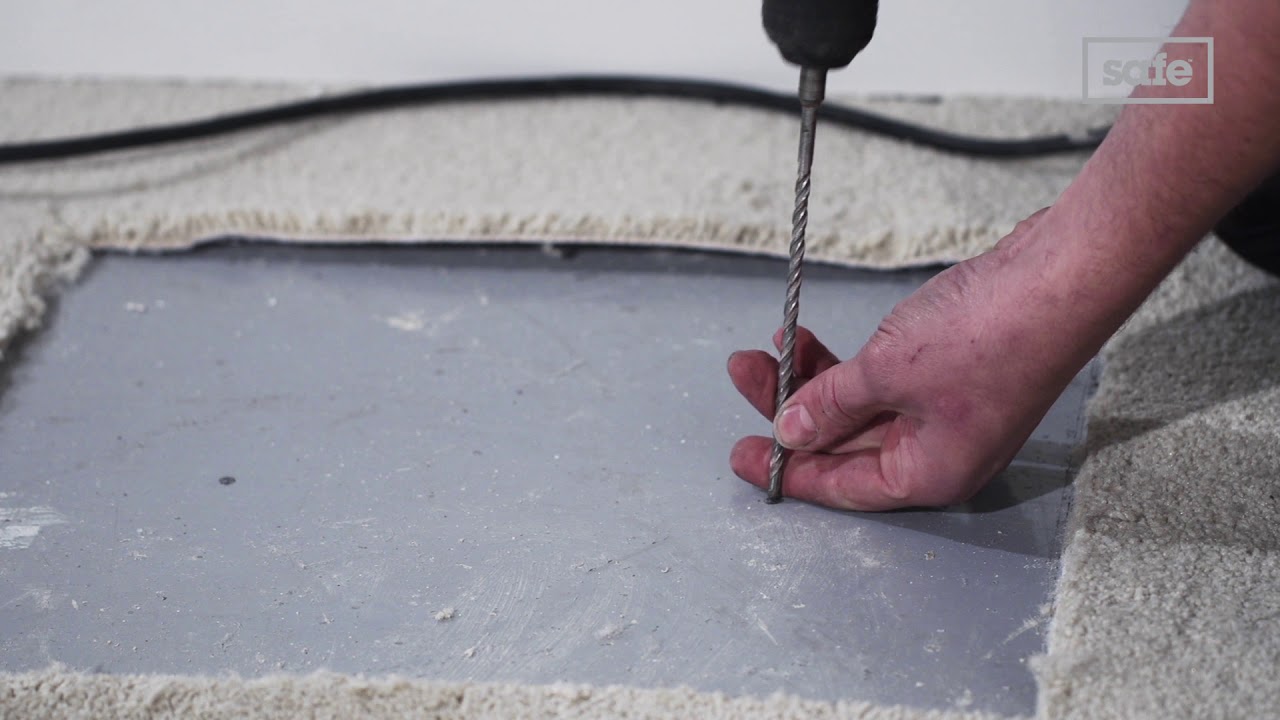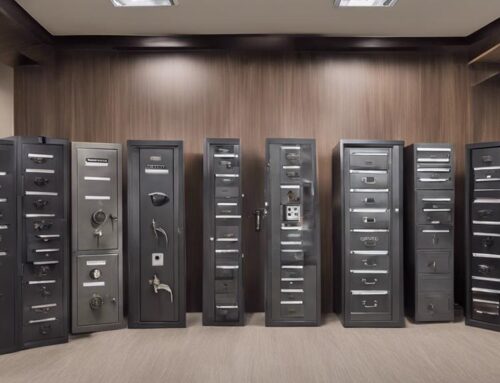Hidden floor safes offer exceptional discretion and security for your valuables. These safes are built directly into the floor, often encased in concrete, and are designed for ground-level installation with thick, circular lids and advanced locking mechanisms. They’re fire-resistant, waterproof, and burglar-resistant, making them ideal for protecting against theft and environmental damage. Proper installation requires professional expertise and meticulous planning, ensuring the safe is securely anchored and concealed beneath a rug or furniture. These safes are constructed from heavy-duty materials with options for combination, digital, or biometric locks. Stay tuned to master the full scope of benefits and installation techniques.
Key Takeaways
- Hidden floor safes offer discreet and secure storage, reducing the risk of theft significantly.
- Proper installation in a dry, level area with professional expertise ensures optimal security.
- Constructed from solid steel, floor safes feature advanced locking mechanisms like combination, digital, or biometric locks.
- Concealed placement and fireproof protection enhance the security and durability of floor safes.
- Regular maintenance, including inspection and lubrication, ensures the longevity and reliability of the safe.
Types of Hidden Floor Safes
When considering concealed floor safes, you’ll find various types that cater to different security needs and installation preferences. These safes are built directly into the floor, providing secure and discreet storage for your valuable items. Concealed floor safes are specifically designed for ground-level installation, often encased in concrete, which offers enhanced protection against theft, floods, and fires.
One key security feature is the circular lid, which increases in thickness for maximum security. This design guarantees that the safe remains hidden from view, blending seamlessly with your floor. The lock mechanism is another critical aspect; the door locks into the solid part of the safe, making unauthorized access extremely difficult. This robust lock mechanism adds an extra layer of security, ensuring that your valuables are well-protected.
The installation process of these safes requires meticulous planning and precision. Encasing the safe in concrete not only secures it but also provides fire protection, safeguarding your valuable items from potential disasters. These safes differ from floorboard safes by offering higher security levels due to their concrete encasement and advanced security features. By understanding these elements, you’ll be better equipped to choose the right concealed floor safe for your needs.
Benefits of Hidden Floor Safes
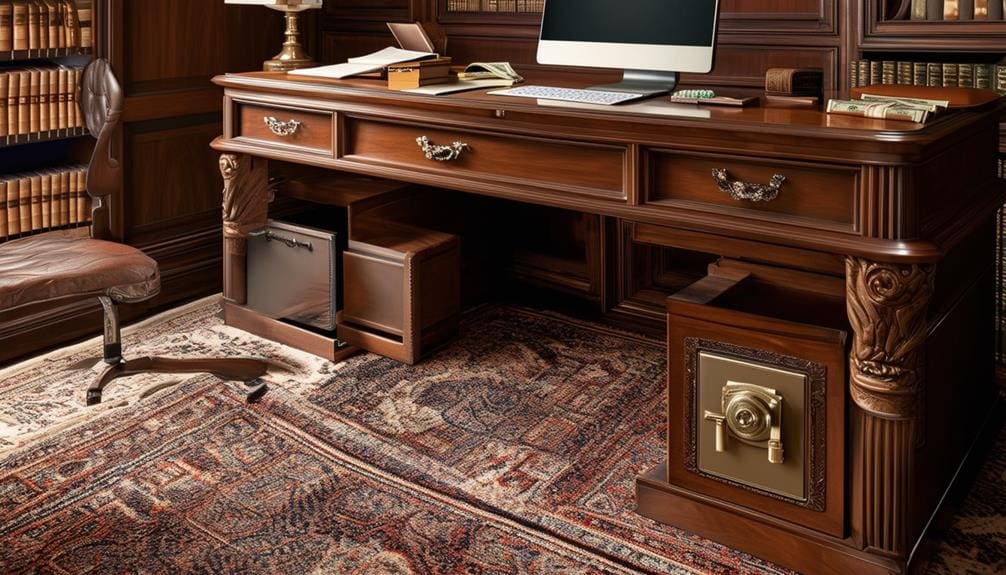
Hidden floor safes offer unparalleled discretion by being concealed beneath the floor, making them incredibly challenging for burglars to locate. This level of concealment provides an extra layer of security, guaranteeing your valuable items remain safe from prying eyes. By being discreetly hidden, these safes reduce the risk of theft significantly.
The protection offered by hidden floor safes extends beyond just theft. Their fire-resistant and waterproof features ensure that your important documents and valuable items remain intact, even in the event of a fire or flood. This dual protection gives you peace of mind knowing that your sensitive items are safeguarded against multiple threats.
Moreover, hidden floor safes are highly burglar-resistant. Their concealed nature means they are less likely to be discovered and tampered with, providing a higher level of security for cash, jewelry, and other valuable belongings. By installing a hidden floor safe, you save space in your home or office, as they don’t take up valuable floor or wall space.
Installation Tips for Floor Safes
Installing a floor safe demands meticulous planning and professional expertise to guarantee utmost security and functionality. Start by selecting a dry, level area free of obstructions to avoid potential damage or interference. Securing a stable base is vital for both security and ease of access.
Opt for professional installation to achieve precise placement and secure anchoring. Experts will verify that your floor safe is installed correctly and securely, minimizing risks associated with improper installation. When selecting the safe size, consider the items you plan to store and ensure it fits comfortably in your chosen location.
To enhance security, conceal the floor safe with a rug or furniture. This additional layer of disguise makes it less likely for intruders to locate and tamper with it. Fasten the floor safe to the floor using concrete or epoxy for added stability. This approach provides sturdy anchoring, making it challenging for thieves to remove the safe.
Security Features of Floor Safes
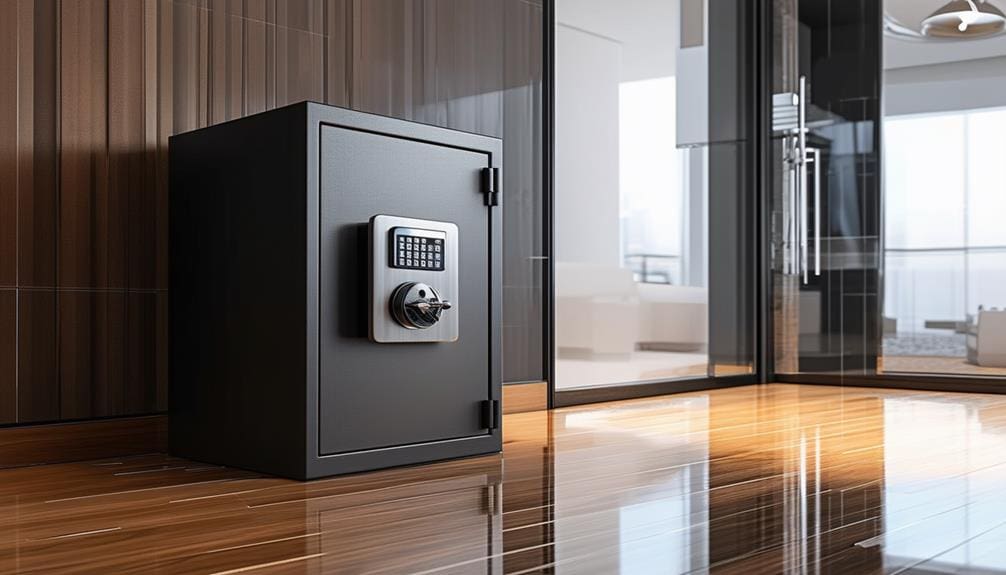
Floor safes typically boast robust security features, including heavy-duty materials and advanced locking mechanisms, ensuring your valuables are well-protected. Constructed from solid steel, these safes provide enhanced security that stands up to both physical attacks and environmental hazards. The use of heavy-duty materials guarantees maximum protection for your most prized possessions.
Advanced locking mechanisms are a key aspect of floor safes. You can choose from combination locks, digital locks, or biometric locks, each offering a unique level of security. Combination locks are time-tested and reliable, while digital locks offer quick access and programmability. Biometric locks, utilizing fingerprints, provide the highest level of personalized security.
The concealed placement of floor safes further enhances their security. By embedding them into the floor and covering them with a layer of concrete or epoxy, you’re adding an extra barrier against theft. Additionally, many floor safes come with fireproof protection, capable of withstanding temperatures up to 1700°F, ensuring the safety of important documents and valuables in case of a fire.
Maintenance and Care
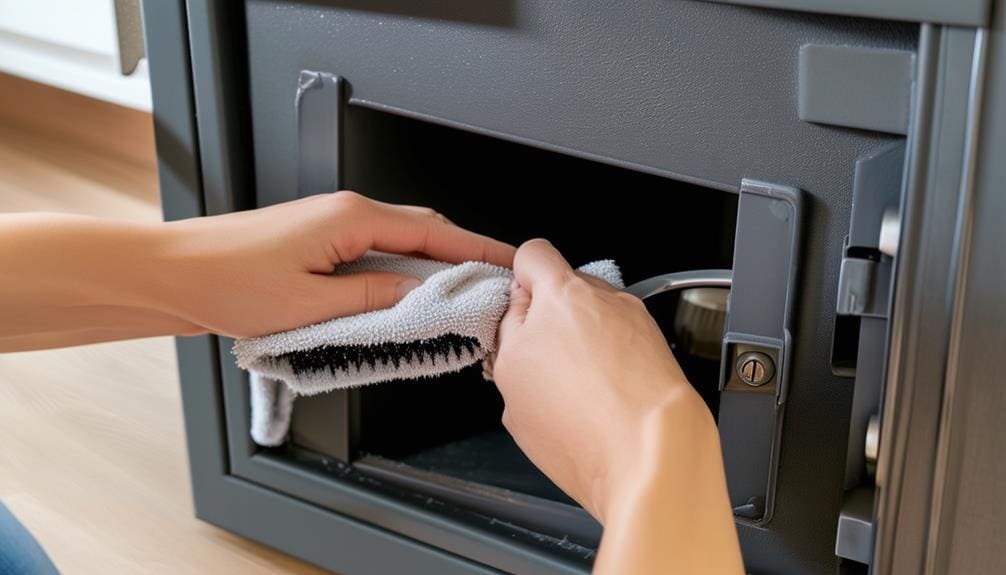
To safeguard your floor safe remains secure and functional, you should regularly inspect it for any signs of damage or wear. This not only guarantees the integrity of your safe but also maintains its security features. Lubricate the hinges, bolts, and lock mechanism periodically. This step is vital for smooth operation and to prevent any potential issues.
Cleaning the exterior is also essential. Use a soft cloth and mild detergent to keep the concealed floor safe looking pristine and free from dirt and debris. This simple act of care can greatly prolong the lifespan of your safe. Additionally, changing the combination periodically is an important step in enhancing security and reducing the risk of unauthorized access.
Always follow the manufacturer’s instructions for maintenance and care. This guidance is designed to secure the longevity and reliability of your hidden floor safe. Neglecting these steps can compromise the security features and effectiveness of your safe.
Here’s a quick reference table for your maintenance routine:
| Task | Frequency | Tools Needed |
|---|---|---|
| Inspect for damage | Monthly | Visual inspection |
| Lubricate parts | Every 6 months | Lubricant, cloth |
| Clean exterior | Quarterly | Soft cloth, detergent |
| Combination change | Annually or as needed | Safe manual |
Frequently Asked Questions
What Are the Pros and Cons of Floor Safes?
Floor safes offer excellent burglary protection, discreet placement, and concealed storage, but their installation process is complex. You’ll appreciate their durability factor and size options, though easy access and interior capacity might be less convenient. Cost comparison varies.
Where to Put a Floor Safe?
You won’t believe how hidden a floor safe can be! Place it in a bedroom closet, underneath living room furniture, on concrete in the basement, or carpet in the office. Avoid areas like the kitchen, bathroom, or garage.
Do Fireproof Boxes Really Work?
Yes, fireproof safes do work. They offer excellent document protection and, when combined with waterproof safes, provide thorough security. Safe alternatives vary, but choose reputable safe brands, appropriate safe materials, sizes, and maintain them for best durability.
How Are Floor Safes Installed?
Installing floor safes is like piecing together a secure puzzle. The installation process involves floor preparation, selecting tools, and considering floor material. You can choose DIY options or seek professional help, ensuring proper anchoring methods and hidden location.
Conclusion
To sum up, hidden floor safes offer a discreet and secure solution for safeguarding your valuables. You’ll find peace of mind knowing that about 34% of burglars enter through the front door, making hidden floor safes an effective deterrent. By carefully selecting, installing, and maintaining your floor safe, you enhance your home’s security. With the added benefit of advanced security features, you can rest assured that your assets are well-protected and out of sight from potential threats.


